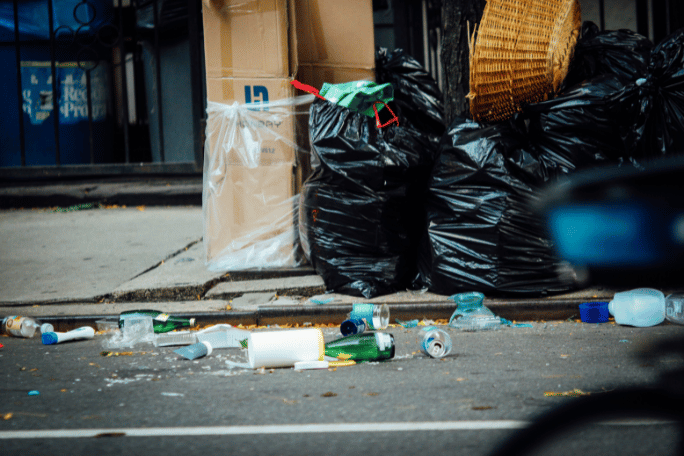Lesson summary
Students will collect and inspect the amount of litter found on the school grounds after lunchtime. They will analyse this waste and think of ways these resources can be reused.
Learning intentions:
Students will...
- understand the role and impacts of food packaging
- begin to take responsibility for unwanted food packaging
- will rethink the concept of waste and brainstorm ways to 'close the loop'.
Success criteria:
Students can...
- know the impacts of food packaging on our environment and suggest ideas for closing the loop
- work safely with waste.
Lesson guides and printables
Lesson details
Curriculum mapping
Australian curriculum content description:
Year 5 Science:
- Science involves testing predictions by gathering data and using evidence to develop explanations of events and phenomena (ACSHE081)
- Scientific knowledge is used to inform personal and community decisions (ACSHE217)
- Use equipment and materials safely, identifying potential risks (ACSIS088)
Year 6 Science:
- Science involves testing predictions by gathering data and using evidence to develop explanations of events and phenomena (ACSHE098)
- Scientific knowledge is used to inform personal and community decisions (ACSHE220)
- Use equipment and materials safely, identifying potential risks (ACSIS105)
Syllabus outcomes: ST3-6PW, ST3-4WS.
Cross-curriculum priority: Sustainability OI.3, OI.8.
Time required: 60 mins.
Resources required
- Device with internet access
- Gloves and tongs for collecting waste
- Printed Student Worksheets (or create your own)
Skills
This lesson is designed to build students’ competencies in the following skills:
- collaboration
- critical thinking
- problem solving
Additional Info
Following this lesson plan is an ideal way for your school to take part in Schools Clean Up Day or a Clean Up on any day of the year. You’ll be joining thousands of amazing teachers in making a difference and creating positive environmental change.


Welcome back!
Don't have an account yet?
Log in with:
By signing up to Cool.org you consent and agree to Cool's privacy policy to
store, manage and process your personal information. To read more, please see
our privacy policy here(Opens in new tab).
Create your free Cool.org account.
Many of our resources are free, with an option to upgrade to Cool+ for premium content.
Already have an account?
Sign up with:
By signing up to Cool.org you consent and agree to Cool's privacy policy to
store, manage and process your personal information. To read more, please see
our privacy policy here(Opens in new tab).